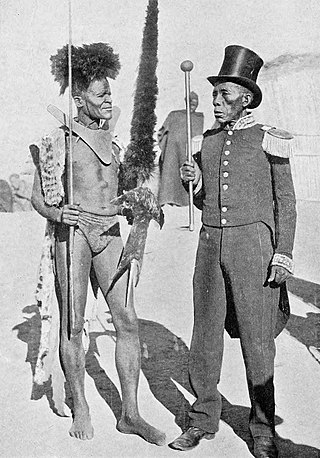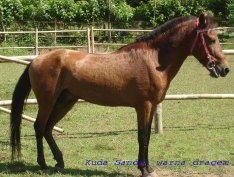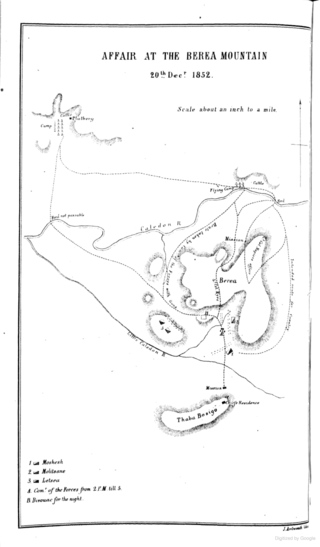
The history of people living in the area now known as Lesotho goes back as many as 400 years. Present Lesotho emerged as a single polity under King Moshoeshoe I in 1822. Under Moshoeshoe I, Basotho joined other clans in their struggle against the Lifaqane associated with famine and the reign of Shaka Zulu from 1818 to 1828.

Basutoland was a British Crown colony that existed from 1884 to 1966 in present-day Lesotho, bordered with the Cape Colony, Natal Colony and Orange River Colony until 1910 and completely surrounded by South Africa from 1910. Though the Basotho and their territory had been under British control starting in 1868, the Cape Colony was unpopular and unable to control the territory. As a result, Basutoland was brought under direct authority of Queen Victoria, via the High Commissioner, and run by an Executive Council presided over by a series of British Resident Commissioners.

The Sotho, also known as the Basotho, are a prominent Sotho-Tswana ethnic group with roots in Southern Africa. They primarily inhabit the regions of Lesotho and South Africa.

Moshoeshoe I was the first king of Lesotho. He was the first son of Mokhachane, a minor chief of the Bamokoteli lineage, a branch of the Koena (crocodile) clan. In his youth, he helped his father gain power over some other smaller clans. At the age of 34 Moshoeshoe formed his own clan and became a chief. He and his followers settled at the Butha-Buthe Mountain. He became the first and longest-serving King of Lesotho in 1822.

The Percheron is a breed of draft horse that originated in the Huisne river valley in western France, part of the former Perche province, from which the breed takes its name. Usually gray or black in color, Percherons are well-muscled, and known for their intelligence and willingness to work. Although their exact origins are unknown, the ancestors of the breed were present in the valley by the 17th century. They are believed to descend from war horses. Over time, they began to be used for pulling stagecoaches; and later, for agriculture and hauling heavy goods. In the late 18th and early 19th centuries, Arabian blood was added to the breed. Exports of Percherons from France rose exponentially in the late 19th century, and the first purely Percheron stud book was created in France in 1893.

The Basuto Gun War, also known as the Basutoland Rebellion, was a conflict between the Basuto and the British Cape Colony. It lasted from 13 September 1880 to 29 April 1881 and ended in a Basuto victory.

Smithfield is a small town in the Free State province of South Africa. Founded in 1848 in the Orange River Sovereignty, the town is situated in a rural farming district and is the third oldest town in present-day Free State, after Philippolis and Winburg.

The Australian Stock Horse, has been especially bred for Australian conditions. It is a hardy breed of horse noted for endurance, agility, and good temperament. Its ancestry dates to the arrival of the first horses in Australia, brought from Europe, Africa, and Asia. It is used today in a wide variety of disciplines, and is still valued as a working horse by stockmen and stockwomen throughout Australia.

The Camargue, French: Camarguais or Cheval de Camargue, is a traditional French breed of working horse indigenous to the Camargue area in southern France. Its origins are unknown. For centuries, possibly thousands of years, these small horses have lived wild in the harsh environment of the Camargue marshes and wetlands of the Rhône delta, which covers part of the départements of Gard and Bouches-du-Rhône. There they developed the stamina, hardiness and agility for which they are known today. Traditionally, they live in semi-feral conditions in the marshy land of the region. The Camargue horse is the traditional mount of the gardians, the Camargue riders who herd the black Camargue bulls used for courses camarguaises in southern France.

The Free State–Basotho Wars refers to a series of wars fought between King Moshoeshoe I, the ruler of the Basotho Kingdom, and white settlers, in what is now known as the Free State. These can be divided into the Senekal's War of 1858, the Seqiti War in 1865−1866 and the Third Basotho War in 1867−68.

Thaba 'Nchu, also known as Blesberg, is a town in Free State, South Africa, 63 km east of Bloemfontein and 17 km east of Botshabelo. The population is largely made up of Tswana and Sotho people. The town was settled in December 1833 and officially established in 1873. The town grew larger following the 1913 Natives' Land Act that declared the area a homeland for the Tswana people.

The Sandalwood Pony is a breed of small horse originating from Indonesia, on the Sumba and Sumbawa Islands. It is named after the Sandalwood trees, which are a major export of the country. The Sandalwood pony is one of the finest in the country, partly due to the great amount of Arabian blood. They make suitable children's ponies, and have been exported to Australia for this purpose. They have also been exported to other Southeast Asian countries for use as racing ponies.

The Sumbawa Pony is a pony breed, named after the island on which they are bred, Sumbawa Island in Indonesia. This breed is very similar to the Sumba or Sandalwood Pony, a breed also developed in these islands, which came from crossing the native ponies on horses of Arabian breeding. The Sumbawa Pony descends from Mongolian Horses and ancient Chinese stock

The Java pony is a breed of pony developed on the island of Java in Indonesia. It is thought to have descended from wild forebears of Mongolian Wild Horse ancestry. It is larger and stronger than the Timor pony, with more Arabian breed influence.
The Nooitgedachter is a South African breed of riding horse. It is the result of a selective breeding programme established in 1952 to preserve the Basutho Pony of Lesotho. It was later decided to give it a different name; it was at first called the Nooitgedacht Pony, named for the Proefplaas Nooitgedacht, the research station near Ermelo in Eastern Transvaal where it was bred; it was later called the Nooitgedacht Horse until the present name was chosen. It is a rare breed, with only about 400 purebreds in existence.

The Boerperd is a modern breed of horse from South Africa. It is a re-creation of the traditional Cape Horse or old-type Boer Horse, which is now extinct.

Morosi was a Baphuthi chief in the wild southern part of Basutoland. He led a revolt against the Cape Colony government in 1879, in defence of his independence south of the Orange River. The British refused to help the Cape Government. However, Letsie, the paramount chief and first son of Moshoeshoe, and many of the Sotho ruling establishment, rallied to support the Cape forces, and the rebellion was put down after several months of arduous fighting. Morosi was beheaded and his body mutilated by Cape troops.

The Battle of Berea was a battle between British forces under Sir George Cathcart and Basuto-Taung forces under King Moshoeshoe I that took place on 20 December 1852. The battle began when British forces broke into three columns and crossed the Caledon River in southern Africa, with the goal of seizing Basuto cattle as a form of punishment for past Basuto cattle raiding.
Laurence Bougault, was a French writer and academic. She was also well known as a long-distance adventurer on horseback.
















